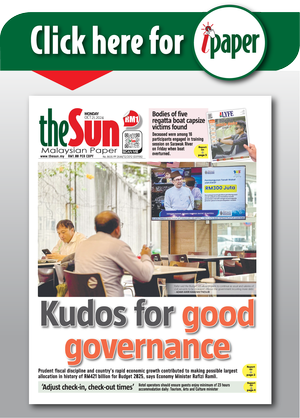AS businesses gear up for another year of challenges and opportunities in 2025, one question lingers: How can traditional industries stay competitive in a rapidly evolving world?
The answer, surprisingly, may not lie in boardrooms or executive suites but
in the untapped ideas of younger employees working on the front lines.
For industries long defined by rigid hierarchies and top-down decision-making, the time has come to embrace a new model of innovation – one that flows from the bottom up.
The younger generation, particularly Gen Z, entering the workforce is digitally savvy, collaborative and bring a fresh perspective to problem-solving. Yet, in many traditional industries, their potential often goes unnoticed or undervalued.
These industries, steeped in decades-old practices, sometimes struggle to adapt to today’s fast-paced digital landscape. What they need is not just a technological overhaul but also a cultural one – a shift toward openness and inclusivity, where innovation can sprout from any level of the organisation.
Bottom-up innovation
Traditional industries often operate on the assumption that good ideas must come from the top. Senior leaders set the strategy and everyone else falls in line. While this structure ensures clarity and control, it also stifles creativity and risks alienating younger employees, who are accustomed to more participatory environments.
This top-down approach particularly limits opportunities for lower-level employees to contribute ideas or innovate. This will make employees feel their input is neither welcomed nor valued.
Research published in Harvard Business Review in 2019 indicates that environments promoting collaboration and participation are more conducive to innovation, contrasting sharply with the hierarchical nature of top-down structure.
Bottom-up innovation, by contrast, flips this script. It is about recognising that employees closest to the action, whether they are factory floor workers, customer service representatives or junior engineers, often have the best insights into inefficiencies and opportunities for improvement.
According to an article published by LinkedIn in 2024, employees at various levels can identify unique challenges and opportunities based on their direct experiences with products, services or processes. This grassroots perspective can lead to innovative solutions that may be overlooked in a top-down approach.
These employees, particularly Gen Z, are digital natives too. They can naturally identify ways to integrate technology into workflows and improve processes. Ignoring their input will not only be a missed opportunity but also a liability in today’s hyper-competitive market.
One of the biggest enablers of bottom-up innovation is technology. Digital platforms like Slack, Microsoft Teams and Trello make it easier than ever for employees to share ideas, collaborate on solutions and provide feedback.
In traditional industries, these tools can bridge the gap between management and front line workers, creating a more inclusive and dynamic flow of communication.
For example, take a manufacturing company that introduces a digital suggestion box via an app. Employees can submit their ideas for process improvements, safety measures or cost-saving strategies directly to management. This will not only lead to actionable changes but will also give employees a sense of ownership and pride in their contributions.
In another scenario, a logistics firm can use collaborative software to crowdsource ideas to reduce delivery times.
Junior staff may be able to suggest using predictive analytics to optimise delivery routes – an idea that can potentially save the company millions of dollars annually.
These scenarios highlight the power of listening to employees at all levels and providing them with tools to make their voices heard.
Shifting mindsets for long-term impact
Encouraging bottom-up innovation is not just about introducing new tools or holding brainstorming sessions – it requires a fundamental shift in mindset.
Leaders in traditional industries must recognise that innovation is not limited to research and development departments or executive teams. It can, and should, emerge from every corner of the organisation.
This means dismantling hierarchical silos and creating a culture where ideas are judged on their merit rather than the seniority of the person proposing them.
It also involves celebrating successes, no matter how small, to show employees that their contributions are valued.
Importantly, organisations must be prepared to invest in upskilling employees to ensure they have the tools and knowledge to drive innovation.
For Gen Z workers, this may mean training in industry-specific technologies. For older employees, it could involve learning to navigate digital platforms more effectively.
Traditional industries often pride themselves on resilience and stability but in today’s fast-changing world, adaptability is equally critical.
By embracing bottom-up innovation, these industries can tap into a wellspring of creativity and energy, particularly from younger employees who see challenges through a fresh lens.
The result? Not just a more innovative and efficient organisation but also one that attracts and retains top talent.
Being part of a company that values their ideas and contributions is a significant motivator for Gen Z workers. In an era where job-hopping is common, fostering this sense of belonging can make all the difference.
Let us move from silence to solutions by giving a voice to those who are often overlooked. By doing so, we can ensure that industries will continue to evolve and eventually eliminate the related risks of being left behind.
Ts Elman Mustafa El Bakri is the CEO and founder of Hesa Healthcare Recruitment Agency and serves on the Industrial Advisory Panel for the
Biomedical Engineering Department at
Universiti Malaya.
Comments: letters@thesundaily.com









